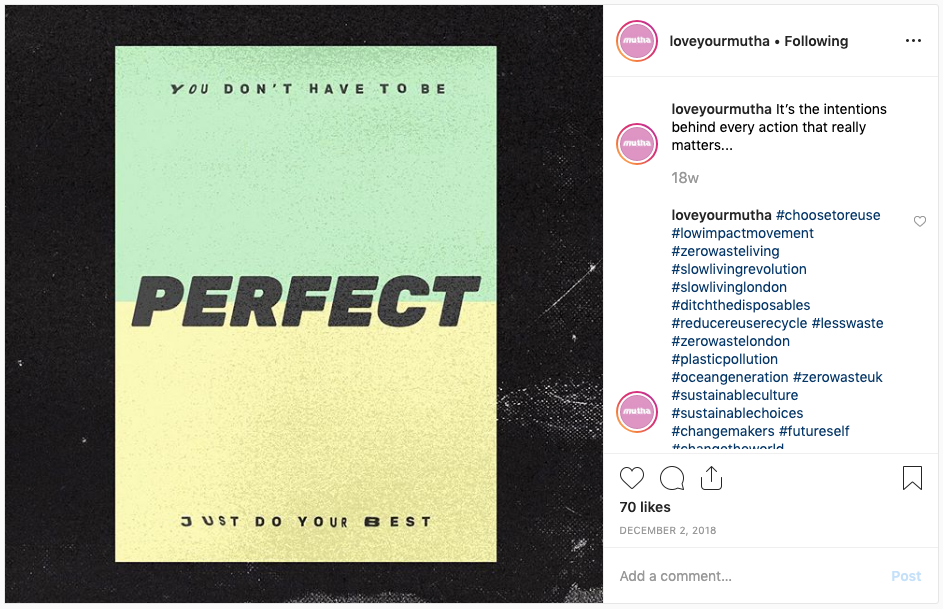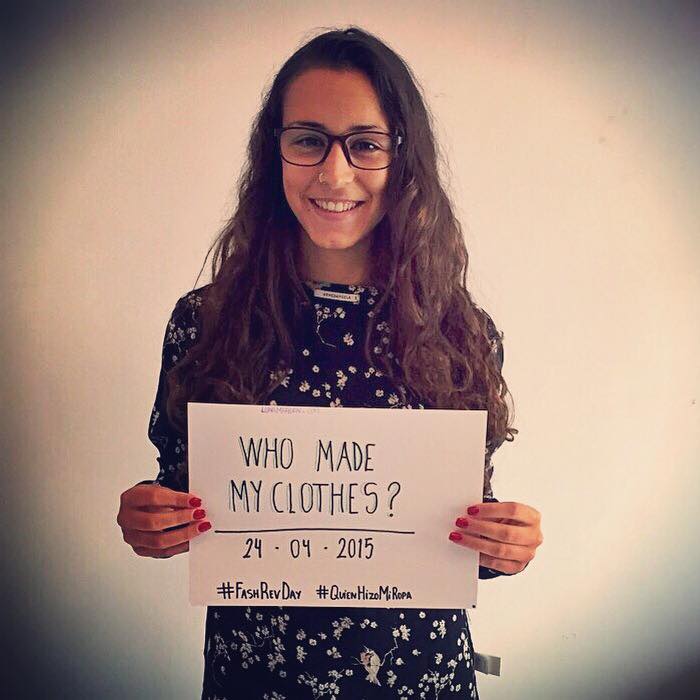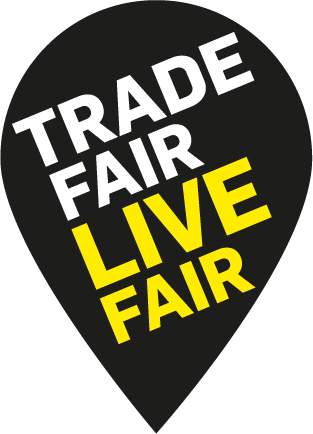A WORTH Partnership Project az egyetlen olyan európai projekt, ahol tervezők, kkv-k, gyártók és technológiai szolgáltatók dolgoznak együtt innovatív, design-orientált üzleti ötletek kidolgozásán.
A projekt főként életstílus-ágazatokra összpontosít, beleértve a divat- és textil-, lábbeli-, bőr- és szőrme-, bútor-/lakberendezési/belsőépítészeti alkotókat, valamint az ékszer- és kiegészítőket.
A projekt inkubációs programot biztosít a vállalatoknak új vállalkozások fejlesztésére: a) 10 000 – 20 000 € pénzügyi támogatást; b) coaching az üzleti stratégiáról és technológiafejlesztésről; c) jogi tanácsadás a szellemi tulajdonjogokkal és -védelemmel kapcsolatban; d) kiállításokon való részvétel; e) hálózatépítés és szakmai kapcsolatok.
A kezdetekről, a célokról, az első WORTH tapasztalatairól, továbbá az aktualitásokról Mányiné dr.Walek Gabriella, a Nemzeti Divat Liga Magyarország Egyesület elnöke, a #GSFW (Globális Fenntarthatósági Divathét) alapítója és elnöke, a Fashion Revolution Hungary országkoordinátora, WORTH nagykövet válaszolt kérdéseinkre.
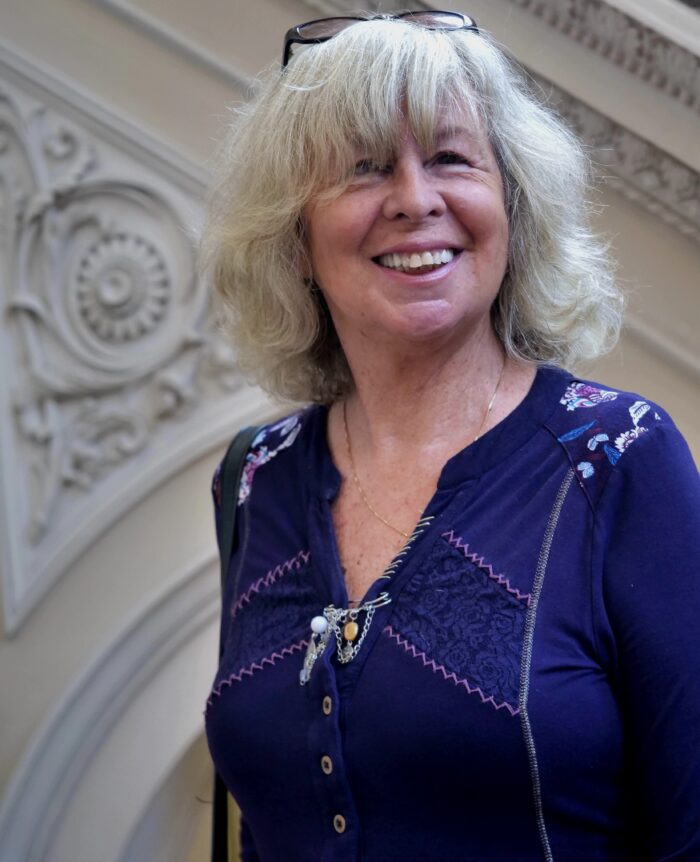
Hogyan kerültél kapcsolatba a WORTH-szel és mi pontosan a feladatod nagykövetként?
2018-ban, a sikeres 3. Globális Fenntarthatósági Divathetünk után személyesen keresett meg Budapesten a WORTH Partnership Project koordinátora, Zicri Montiel, aki K+F projektmenedzser az AITEX Kutatási és Innovációs Központban – a spanyol AITEX a szakmai vezetője és menedzsere a projektnek -, és részletesen tárgyaltunk a WORTH Project céljairól, a pályázati lehetőségekről.
Mivel 2015 óta a Nemzeti Divat Liga Magyarország Egyesületünk, amelynek elnöke vagyok, erősen a fenntartható divat felé orientálódott és 2017 óta a Fashion Revolution országkoordinátori posztjára is kineveztek, ennek köszönhetően igen széleskörű hazai és nemzetközi kapcsolatokkal rendelkezem ezen a területen. Zicri Montiel úgy gondolta, hogy ez a szakmai háttér mindenképpen segítségemre lesz, hogy minél több textil-, konfekció- és divatiparban tevékenykedő tervezőt, gyártót, de szakmai szervezeteket is meg tudjak szólítani és segíteni, hogy minél többen megismerjék a pályázati lehetőséget és Magyarországról is minél többen sikeresen pályázzanak.
Ezért felajánlotta a nagyköveti posztot, amit én elvállaltam. Keresnyei János, a pécsi Kreatív Ipari Klaszter elnöke akkor már a WORTH mentora volt, akivel igen jó munkakapcsolatunk alakult ki és azóta együtt segítjük a magyar pályázókat. Az első WORTH 3 pályázati fordulójában, de az idei WORTH II. első fordulójában is közös csoportot is létrehoztunk a Facebookon a pályázat iránt érdeklődőknek, amelyben megbeszéltük az általános és a pályázók specifikus kérdéseit is, tájékoztattuk őket a konzultációs lehetőségekről.
Fontosnak tartottam és tartom most is, hogy bátorítsam és inspiráljam a pályázókat, mert nagyon sok kreatív, innovatív ötletük van, de sokszor visszarettennek attól, hogy ezt egy pályázati formába, a kért pályázati feltételeknek megfelelően formába is öntsék. Másik probléma akkor merülhet fel, ha valaki olyan ötlettel foglalkozik, amely sokféle felhasználási területet érinthet, gondolok például innovatív textiliára stb. Itt különösen fontos lehet a megfelelő partnerkapcsolat kiválasztása. Ez utóbbi egyébként a magyar pályázóknak sokszor jelentett nehézséget, de ebben tudunk segíteni, WORTH-ös kollégák segítségét is több esetben kértem. Itt jegyzem meg, hogy sok olyan külföldi kolléga van már a WORTH csapatában, akiket én ajánlottam, olyanokat, akik a körforgásos és fenntartható divatban ismertek és jó tapasztalataim voltak velük az együttműködésről.
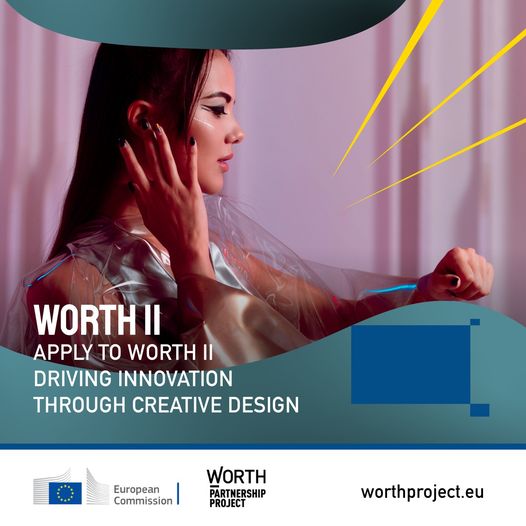
Úgy tudom, a WORTH első felvonása sikernek örvendhetett…
Abszolút sikeres volt a WORTH első felvonása, a magyar szereplés is, amit külön nekem is megköszöntek. Egyébként alkalmam volt az WORTH Steering Bordjában dolgozni és pályázatokat is bírálni. Én elsősorban a fenntarthatósággal, körforgásos divattal kapcsolatos pályázatokat kaptam.
Számomra is igen inspiráló volt ez a feladat, nagyon sok új, innovatív EU-COSME partnerségi pályázatot láttam, amelyek optimizmusra adnak okot, hogy az ilyen jellegű nyertes pályázatok, a WORTH Partnership Project inkubációs támogatásával segíthetnek majd abban, hogy az európai textil-, konfekció-, divatipar jó irányban haladjon.
Sajnos idén a WOTH II-ben, a háborús és menekült helyzet miatt adódó egyéb elfoglaltságok, a tervezett programok átszervezésével járó feladatok miatt nem tudtam ezt a munkát elvállalni, de nagykövetként idén is foglalkoztam a pályázókkal.
Úgy látom azonban, hogy a Covid, a háború és egyéb negatív hatások a környezetükben kicsit visszafogták idén a magyar pályázók lelkesedését, sokkal erősebb motivációra volt szükségük, összehasonlítva a WORTH első fordulójában tapasztaltakkal. De szerencsére igy is 4 sikeres magyar pályázó volt és remélem, hogy ez a szám a WORTH II második fordulójában csak növekedni fog.
Mely projektek, események, együttműködések a személyes kedvenceid a WORTH által megismert kezdeményezések közül?
Érdekes, hogy amikor a Facebook-csoportban beszélgetünk a magyar pályázókkal, sokszor már látjuk előre Keresnyei Jánossal, hogy mik azok a projekt ötletek, amelyeknek sikere lesz. Ilyen volt például Veszprémi Gabi hulladék bőrök felhasználásával, különleges technológiával készült cipő projektje. Andrási Edinát például én is bátorítottam, hogy nagyon jó a speciálisan rétegelt kerámia lámpa projekt és nyertes pályázó is lett. Nagyon izgalmas ötletnek tartottam Megyesi Zsuzsa „sztepptánc” cipő ötletét, amely szintén bejutott a nyertes pályázók közé. De több sikeres pályázat volt bútor témában is, elsősorban innovatív szék megoldásokban. Kiemelnék még egy kiváló nyertes pályázatot, a MINTA-t, amelynek széleskörű felhasználása már most megjósolható.
Egyébként sok olyan magyar pályázó is volt, akiknek az ötlete újszerű volt, de talán még nem volt annyira kidolgozva és olyan szintre hozva, hogy az a legjobbak közé kerülhessen. Ugyanakkor ezeket érdemes kicsit újragondolni, átdolgozni és megfelelő partner keresve megint pályázni. Ahogy többször említettem, ez az utóbbi sokszor pozitív vagy negatív irányba lendíti a pályázat sikerességét!
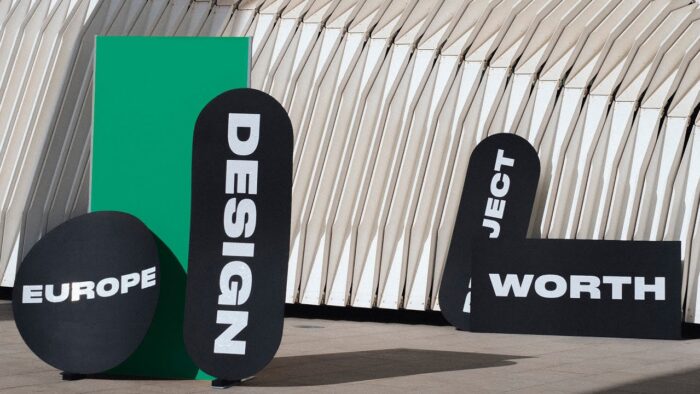
Már elindult a WORTH II. Hol tart most a projekt és mi várható még ?
Sikerrel lezárul a WORTH II. első fordulója A WORTH II. második forduló 2022.október 24-én indul, a pályázati határidő: 2023.febr.15.
Az első forduló eredményei: 123 pályázatot nyújtottak be, 33 EU-COSME partnerország 285 pályázójának részvételével
Ágazati megoszlás:
- 45% textil és ruházat;
- 28% bútor, lakberendezés, belsőépítészet és építészet;
- 13% ékszer és kiegészítők;
- 7% lábbeli és 7% bőr és szőrme.
Mi várható a szeptember 2-i workshopon, kiknek ajánlanád az eseményt?
Ezen a workshopon szeretnénk beszámolni a korábbi pályázati eredményekről és részletesebben ismertetni a lehetőségeket és a pályázati feltételeket. Szeretnénk bátorítani a hezitálókat is, hogy érdemes belevágni, mert nemcsak a pénzbeli támogatásra, hanem a komplett inkubációs WORTH segítségre is kell gondolni. Erről is fogunk a workshopon beszélni.
A programot ajánljuk tervezőknek, gyártóknak, tech fejlesztőknek, akik megfelelnek a pályázat alábbi kiírásának:
- A pályázatokat legalább két, de legfeljebb három támogatható partnerből álló partnerségeknek kell benyújtaniuk.
- A partnerségeknek transznacionálisnak kell lenniük, a tagoknak legalább két országból kell származniuk, EU-COSME társult országból.
- Minden partnerség kijelöl egy vezető pályázót. A vezető pályázó csak a következő lehet: kkv vagy önálló vállalkozó.
- A partnerségben az alábbi szerepek közül legalább kettőnek képviseltetnie kell magát:
- tervező/alkotó; kötelező minden támogatható partnerség számára.
- gyártó/kézműves/készítő,
- technológiafejlesztő/technológiai szállító/technológia tulajdonosa;
- A partnerségeknek a támogatható életstílus-iparág számára kidolgozott megoldásokkal kell foglalkozniuk.
- Ágazatok: divat és textil, lábbeli, bőr és szőrme, bútor és otthon, dekoráció, belsőépítészet és építészet, ékszerek és kiegészítők.
- A pályázók felhívásonként csak egy pályázatban vehetnek részt.
- A technológiai szolgáltatónak/tulajdonosnak/szállítónak rendelkeznie kell a technológia szabad használatával.
A korábbi pályázati felhívásokon már nyertes résztvevők csak akkor vehetnek részt, ha a projektötlet és a partnerségi konfiguráció teljesen eltér a következő pályázatoktól az előző felhívás/kiadás során már elnyert pályázattól.
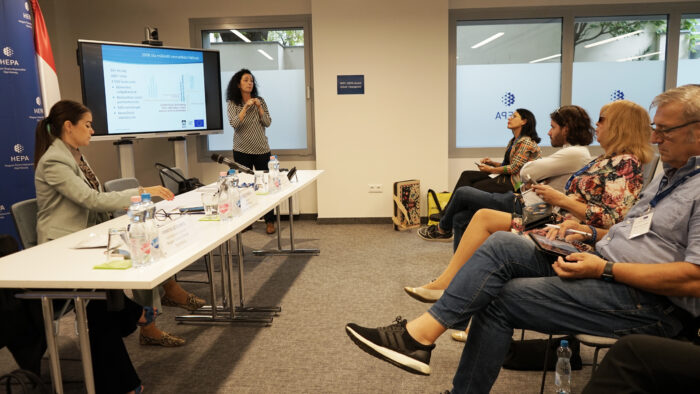
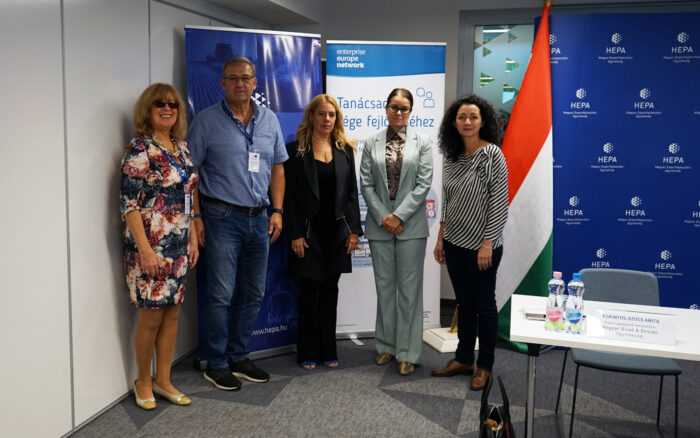
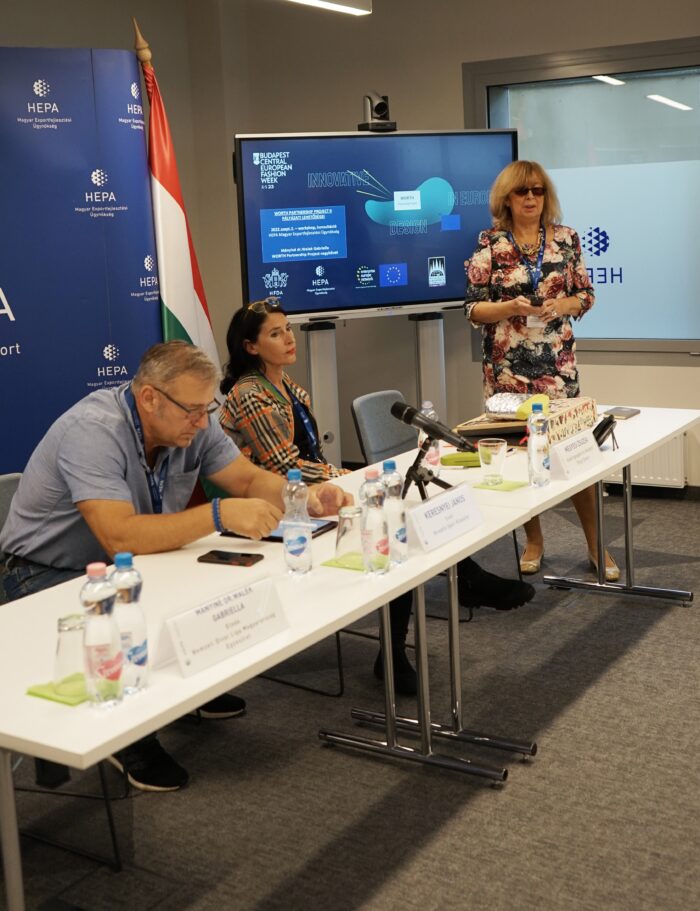
Kiemelt kép: Gabriella Veszpremi X Inpelsa
Mányiné Dr. Walek Gabriella előadása erre a linkre kattintva tölthető le.
Egy magyar sportruházati márka, amely odafigyel a környezetbarát anyaghasználatra és etikus körülmények között gyártat, itthon – a FANNA Polewear alapítójával, Nagy Fannyval beszélgettünk többek között a rúdtáncról, a fenntarthatóságról és a társadalmi szerepvállalásról.
A rúdtánc mint sport egyre nagyobb népszerűségnek örvend hazánkban is. Milyen indíttatásból döntöttél egy sportruházati márka alapítása mellett?
Korábban tervezőként tevékenykedtem, kicsit más területen. Bőrkiegészítőket és -ruhákat terveztem, és már akkor szempont volt a környezettudatos tervezés és gyártás, így újrahasznosított bőrökkel dolgoztam. Időközben elkezdtem a rúdsportot űzni, és azonnal beleszerettem. Onnantól egyértelmű volt, hogy a korábbi irányt fogom kiegészíteni egy vegán és környezettudatos sportruházati vonallal. Az alapinspiráció abszolút a rúdtánc volt, viszont nyitottak vagyunk szinte minden más sportra, illetve utcai vagy otthoni darabokat is készítünk.
Miben nyilvánul meg a fenntarthatóság a márka életében?
Amiben csak lehet! Kezdve az anyagválasztástól, annak a felhasználási módjától, a csomagoláson át a szállításig. Hitelesített anyagokkal dolgozunk, gyűjtjük a használt ruhákat, melyekből ajándéktáskát készítünk a vásárlóinknak. Emellett az újrahasznosított csomagolás nagyszerű módja a már használt anyagok élettartamának a meghosszabbításának!

Kérlek, mesélj részletesebben az általatok használt környezetbarát anyagokról!
Hosszútávú célunk, hogy szélesebb körben is hozzájárulhassunk a fenntarthatósághoz, aminek alappillérjét a megfelelő anyagválasztás képezi. Kétfajta anyaggal dolgozunk jelenleg: az ECONYL® és az OEKO-TEX® minősítésű biopamuttal. A tanúsítvány megszerzéséhez többek között etikus dolgozói körülmények szükségesek, amit a márkánk 100%-ban támogat. Ezt az anyagot továbbá kevesebb vízfelhasználással és vegyszermentesen állítják elő, ami az egészségünk számára is kiemelten fontos.
Az ECONYL® anyagot szintetikus hulladékokból, az óceánból származó halászhálókból állítják elő, majd az újrahasznosítást követően pontosan ugyanolyan minőségű nylonfonalat kaphatunk, mint amilyen a szűz nejlon. Az egyik legjobb tulajdonsága, hogy számtalanszor újrahasznosítható. Az ECONYL® fonalból készült újrahasznosított poliamid tökéletes fürdőruhához és edzőfelszereléshez, míg a biopamutból póló, body, valamint szabadidő ruházat készül.
Mire kell ügyelni a rúdtánc öltözékek tervezésénél?
Arra kell csak figyelni, hogy a hajlatok lehetőleg szabadon maradjanak, ezért található a kollekciókban olyan hosszú ujjú felső vagy nadrág is, amin az érintett részek szabadon vannak. Ettől függetlenül vannak olyan elemek ebben a sportban, amiket leggings-ben is meg lehet csinálni.
Egy erős közösség alakult ki az évek során a brand körül, milyennek látod a Fanna-nőket?
Nagyon jóleső érzés, hogy ilyet visszahallhatok. Imádom a Fanna nőket, mindenki csodálatos, igazi tudatos vásárlók, tele szeretettel! Nekem ők adják a legnagyobb motivációt. A Fanna-nők számomra igazi szuperhősnők.

Örömmel láttam, hogy a FANNA Polewear kiáll a fontos, társadalmi ügyek mellett és ez anyagi támogatásban is megnyilvánul. Milyen szervezeteket választottatok eddig és miért éppen azokat?
Szeretnénk minél több szektort támogatni, mert annyi fontos és fejlesztendő terület van a világban. Eddig támogattuk a Jövő Öko-Nemzedéke Alapítványt, akik Magyarországon tevékenykednek a környezetvédelem ügyében, többek között az illegális szemetelés ellen. Továbbá, a Szívemben Született Afrika egyesületet, ők Afrikában edukálnak és segítik többek között az ott élő nőket, a menstruációs szegénységben szenvedőket. Ezt szerettük volna mi is támogatni – személyes ügyemnek tekintem a nők támogatását.
A Szivárványcsaládokért Alapítványt is támogattuk, mert hiszünk az elfogadásban, a szeretetben és az egyenlőségben. Fontosnak éreztem, hogy kiálljunk egy ilyen ügy mellett is, és mondjuk el a véleményünket egy közösségként, mert összefogással és egymás támogatásával érhetünk el változásokat. Hisszük, hogy a szerelem mindenkié.
Jelenleg a 10 millió Fa Alapítvánnyal dolgozunk együtt. Ebben már aktívabban is szeretnénk részt venni, ezért létrejött a FANNA 10 millió fa közösség, ahol már mi is szervezhetünk faültetést, ezúton is minden segítő kezet szeretettel várunk eseményeinken!

Idén ti is csatlakoztatok a Who made your clothes?-kampányhoz, miért tartottátok ezt fontosnak?
Sajnos még mindig sokan nem néznek a márkák mögé, hogy az adott termék valójában hogyan, milyen körülmények között készült és mégis hogyan lehet ennyire olcsó? Illetve nagyon nehéz lekövetni, és átlátni egy nagy céget, hogy hogyan dolgoztat, milyen kondíciókat biztosít. Nekünk nagyon fontos, hogy megmutassuk és kommunikáljunk arról, hogy mi hogyan dolgozunk.
Kiemelt jelentőségű és égetően sürgős, hogy a rabszolgamunka felszámolódjon. Talán kicsit felfoghatatlan számunkra, hogy ez létezik. Itthon is több olyan varroda van, ahol konkrétan addig dolgoznak a varrónők a varrodában, ameddig élnek, mert soha nem voltak bejelentve, ezáltal nincs nyugdíjuk, illetve 300-500 forintot kapnak egy ruhadarabért, amiből – mikor én odakerültem – kettőt tudtam megvarrni egy egész nap alatt.
Persze, a tapasztalt varrónők többet is el tudnak készíteni. A fizetésük úgy sem volt az egekben, de legalább egészséges körülmények között dolgoztak. Én tanulni és tapasztalatot gyűjteni mentem oda elsősorban, viszont érthető, hogy nem is tudják megtartani a fiatal munkaerőt ezekkel a feltételekkel. Szóval nekem ez is egy személyes ügy. Egyrészt, mert tapasztaltam is a helyzetet, másrészt, mert ez is főleg a nőket érinti. Számomra nagyon fontos, hogy ne csak a vásárlóinknak adjuk meg a tőlünk telhető legtöbbet, hanem a legnagyobb szupererőnknek, a munkatársainknak és a gyártóinknak is biztosítsuk azt, amitől nekik is megéri ezt a munkát szeretettel és lelkesen végezni.
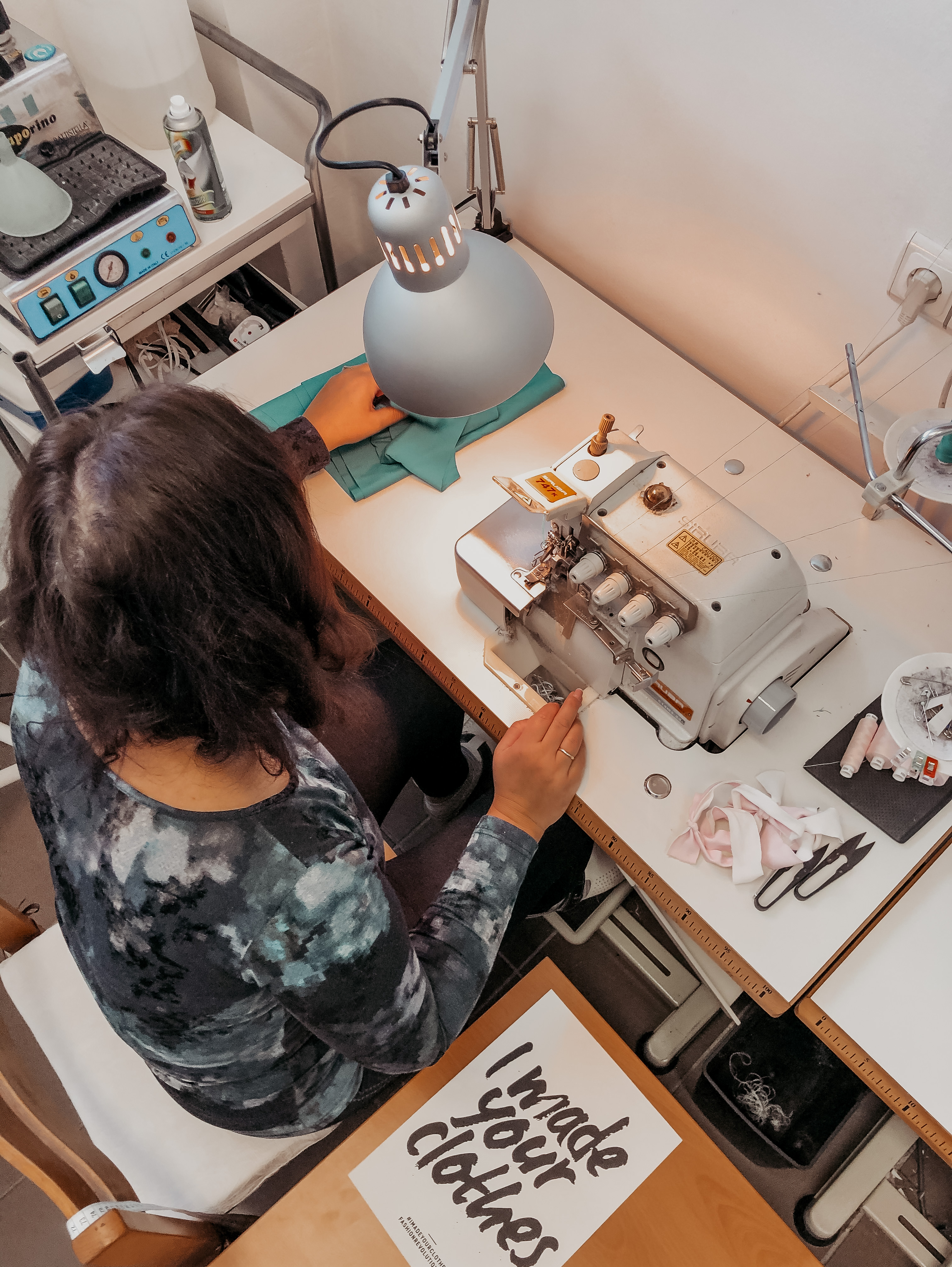
Mit üzennél az olvasóknak, hogyan váljanak tudatos vásárlóvá?
Először is ne vásároljunk, csak akkor, ha valamire tényleg szükségünk van. Ha eldöntöttük, hogy valamire szükségünk van, akkor informálódjunk az adott márkáról. Ez azért nehéz 2021-ben, mert a legtöbb márka bevette a „programjába” valamilyen szinten a fenntartható szemléletet, a kérdés csak az, hogy kik azok, akik nem a greenwashing stratégiát űzik. Kövessetek tudatos influencereket, akik már alaposan utánanéztek azoknak a márkáknak, akiket ajánlanak. Példul Mengyán Esztert, akinek van egy szuper oldala is, ahol gyűjti a hasonló szellemű tudatos márkákat, és kifejezetten a divat területre koncentrál. Minden egyéb tippekért pedig Vászonzsákoslány néven futó Antal Évinek és Zsebibogyó Zsófinak vannak remek tartalmai a témában.
Szerző: Pölz Klaudia, fotók: Fotók: Matovic Mana
A hamarosan megvalósuló 6. Global Sustainable Fashion Weekről a szervező, Mányiné Dr. Walek Gabriella osztja meg gondolatait.
Miben lesz más az idei GSFW mint a tavalyi?
Tavaly a Francia Intézetben megtörténtek az előkészületek az 5. GSFW szervezésére, ott tartottuk volna a nemzetközi öko divatbemutatót és a konferenciát is. Macron elnök felhívása kapcsán létrejött Fashion Pact apropóján a tiszteletbeli vendégország Franciaország volt. A Fashion Pact egy új kezdeményezés, amelyhez százötven világszintű divatmárka csatlakozott. Az egyezményben megfogalmazzák, hogy közös erővel milyen változásokat szeretnének véghezvinni a divatiparban.
Három fő területtel kapcsolatban tűztek ki célokat a jövőre nézve, annak érdekében, hogy a divatipar kevésbé környezetszennyező iparág legyen: a globális felmelegedést (a cél az, hogy 2050-ig elérjék az üvegházhatást okozó gázok nulla kibocsátását azért, hogy a globális felmelegedést 2100-ig 1,5 Celsius fok alatt tartsák), a biológiai sokféleség helyreállítása (a természetes ökoszisztémák helyreállítása és a fajok védelme) és az óceánok megőrzése (konkrétan az egyszer használatos műanyagok használatának csökkentésével). Sajnos azonban a vírus helyzet közbeszólt, végül – talán elsőként a divathetek történetében – digitálisan rendeztük meg a GSFW-et, amihez a korábbi gyakorlatnak megfelelően szinte minden kontinensről csatlakoztak előadók, tervezők, olyanok is, akik esetleg nem tudtak volna Budapestre jönni, tehát a digitalizáció kínálta előnyöket ki tudtuk használni.
Idén már nagyon vártuk, hogy offline eseményt is szervezhessünk, így a 2021. június 7-13 közötti héten megvalósuló Globális Fenntarthatósági Divathét már hibrid megoldású lesz, az izgalmas offline programok mellett öko divatbemutatót is rendezünk június 11-én Balatonbogláron. Helyszíne a SÁBA-HÁZ előtti platánsor övezte partszakasz, csodás kilátással a Balatonra, ahol a természetes kifutón 4 divatmárka és tervező legújabb fenntartható kollekcióját mutatjuk be: Réka Orosz, Agnes Krivanics, ETRE Organic Underwear, Anni Pastor.
Mire számíthatunk a külföldi résztvevőktől?
A programot élőben is közvetítjük, lehetővé téve, hogy nemcsak Magyarországról, de a világ legtávolabbi pontjáról is elérhető legyen a nézők számára. Az adáshoz csatlakozni fog videóval több olyan tervező is, aki nagyon szép természeti helyszínEn mutatja be a kollekcióját, például Svédországból, Olaszországból, Equadorból, Spanyolországból. Ezen kívül külön YouTube Premier Live-ban fogjuk bemutatni a további tervezők kollekcióját, közöttük találjuk az idei #GSFW tiszteletbeli vendégkontinensét: Ázsia képviseletében az ASEAN Fashion Designers Showcase tervezőit.
Az utóbbi években kb. 25 ország képviselői csatlakoztak az eseményekhez, idén ezek száma nő, elsősorban az ázsiai részvétellel, hiszen ahogy fentebb említettem az ASEAN Fashion Designers Showcase képviseletében 34 tervező vesz részt videós bemutatkozással különböző ázsiai országokból, például Indonézia, Thaiföld, Szingapúr, Kína.
Idén először magyar tervezőt tudtunk Ázsia egyik legerősebb divathetére, az Aspara Fashion Weekre delegálni, és ezen nagyon sok olyan ázsiai tervező mutatkozott be, akiknél a fenntarthatósági koncepciók előtérbe kerültek, a hagyományőrzéstől kezdve a természetes anyagok választásáig. Ott figyeltem fel azokra a tervezőkre is, akiket most mi is szeretnénk bemutatni. Sokszor az emberek tudatában a kínai olcsó, igénytelenebb ruhák jutnak eszünkbe, holott érdemes lenne megnézni azoknak a tehetséges ázsiai tervezőknek is a kollekcióit, akik dizájn és minőség szempontjából igen magas minőséget képviselnek.
A balatonboglári divatbemutatón például Pásztor Anni kiváló magyar tervezőnket is megihlette az ázsiai kultúra és öltözet. Fontosnak tartom, hogy a GSFW inspirációt adjon a résztvevőknek és motiválja őket az együttműködésre egy fenntarthatóbb, átláthatóbb és etikusabb divatvilág érdekében.
Lesznek más események is a divatbemutatót kívül; milyen témákat érintenek majd a konferenciák?
A GSFW konferencia, szeminárium része is idén másképpen lesz, kiemelt témákat osztunk el panelekre, és ezekre épülnek a GSFW különböző napjain szervezett online programok.
Június 7-én Zoom live program keretében külföldi szakemberek mutatják be a saját gyakorlatukat a fenntartható és etikus divat oktatásban Lengyelországtól Pakisztánig, majd az előadások egy izgalmas beszélgetéssel folytatódnak, kiváló moderátorunkkal, Olga Johnston Antonovával, aki a GSFW International Executive Board tagja. A tagok között van még Sass Brown, a dubaji Design és Innovációs Intézet alapítója, Vittorio Giomo, aki tanácsadóként dolgozik az olasz színtendencia-előrejelzésekkel foglalkozó intézetnél.
Június 8-án YouTube Premier Live platformon nagyon sok aspektusból fogják az előadók körüljárni a fenntartható szálak, textíliák, alapanyagok témáit. Ez a már említett Fashion Revolution kampányhét egyik sikeres programjának a folytatása lesz, amelynek a kérdése: WhoMadeMyFabric, vagyis ki készítette az anyagom?
Június 9-én szintén Zoom live programban fognak a résztvevők a fenntartható és körforgásos divat kihívásairól beszélni, a saját szakterületük szemszögéből.
Június 10-én a kreatív Európa téma lesz terítéken, az egyik legkomolyabb kreatívipari kezdeményezés, a WORTH Partnership Project szakértői beszélnek a projekt eredményeiről és több érdekes nyertes pályázatot is bemutatunk. Ehhez a panelhez még más határontúli együttműködéseket támogató szervezetek képviselői is csatlakoznak.
Június 12-én a soproni OMG Designer Store bemutatkozását várjuk több olyan hazai alkotó munkával, akik minden szempontból a fenntarthatóság irányelvek szerint tervezik és gyártják a ruhákat, táskákat, kiegészítőket és támogatni szeretnék a FR edukációs programunkat is.
Miért pont a Balatonon lesz a rendezvény?
A 6. GSFW eseményünk üzenete, hogy ebben a pandémiás helyzetben figyeljünk a közösség és a természet erejének fontosságára. Ezt kiválóan szemlélteti a Balaton vidéke, amelynek természeti szépségére méltán lehetünk büszkék és örömmel mutatjuk be a külföldieknek ezen a helyszínen a magyar tervezők kollekcióit. Az esemény támogatója Balatonboglár Önkormányzata, fővédnöke Mészáros Miklós polgármester úr, akivel a helyi közösséget is megszólítottuk és a szervezésbe is igyekeztük bevonni.
Milyen kapcsolatban áll a Fashion Revolution a GSFW rendezménnyel?
A Nemzeti Divat Liga Magyarország az egyesületi háttérrel támogatja a Fashion Revolution Hungary munkáját, szoros kapcsolatban állunk a Fashion Revolution londoni központjának munkatársaival és a mintegy 100 országban működő FR csapattal. A FR-nak vannak olyan irányelvei és javaslatai, illetve üzenetei, amelyek mentén szervezzük a hazai eseményeket. A Fashion Revolution áprilisi kiemelt kampányhete viszont még szorosabban követi a központ által megadott tematikát, be- és ráépül a közös FRW programokra. A Globális Fenntarthatósági Divathét a Nemzeti Divat Liga Magyarország által alapított és évente szervezett külön esemény, amelynél természetesen szem előtt tartjuk a FR céljait is, de ez egy önálló divathét, amelyet már Közép-Európa legerősebb fenntarthatósági divathetének nevezett több külföldi szakember. A Nemzeti Divat Liga Magyarország Egyesület tehát igen széles nemzetközi kapcsolati háttérrel és globális együttműködéssel dolgozik a FR nemzetközi csapatokat és a GSFW platformját, az úgynevezett #GSFWfamily-t is beleértve.
További információk: www.gsfashionweek.com
Szerző: Valasinyovszki Lilla
This month’s Power of Influence takes us in a bit of a different direction. On a 15 minute walk from London Euston to London Kings Cross, Fashion Revolution co-founder Orsola de Castro and renowned fashion critic and columnist Sarah Mower spoke with Sara Arnold of Extinction Rebellion (and Higher Studio) about the recent protests, the aim of the movement and the next steps in their fight for climate justice. Shortly after this interview, the UK Parliament declared a climate change emergency.
A little bit of context: On Saturday April 27th, during Fashion Revolution Week and towards the end of Extinction Rebellion’s 2 week occupation of Central London, Slow Factory hosted “Study Hall: Sustainability as a Culture”. The event (in its first international edition) was held in London, UK. Before the event, the Fashion Revolution team along with Sara Arnold, Sarah Mower, speakers, attendees and supporters took a walk to discuss the current happenings.
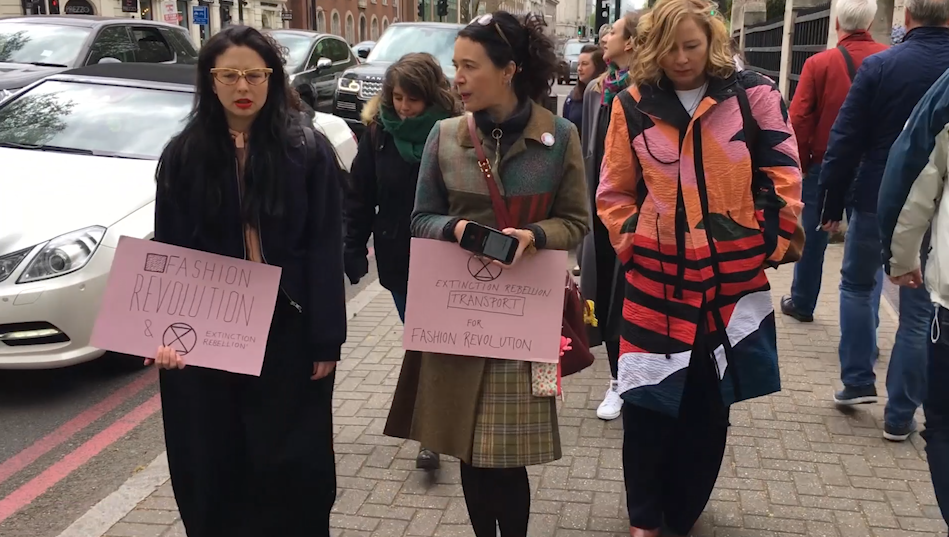
Here’s what was said:
Orsola de Castro: So the response to the protests… people are really prepared to put themselves out there. There were over 1000 arrests you say. Did you find that the overall response was positive?
SA: There has been criticism of the tactics used, there has been criticism of disruption, but that’s not we’re worried about. We want people to hear our demands, that’s what people should be focused on. I think we are making progress on that. Everyone is talking about climate change in a different way. Talking about it as an emergency. It doesn’t matter if they don’t agree with how we’ve gone about doing things. As long as it works.
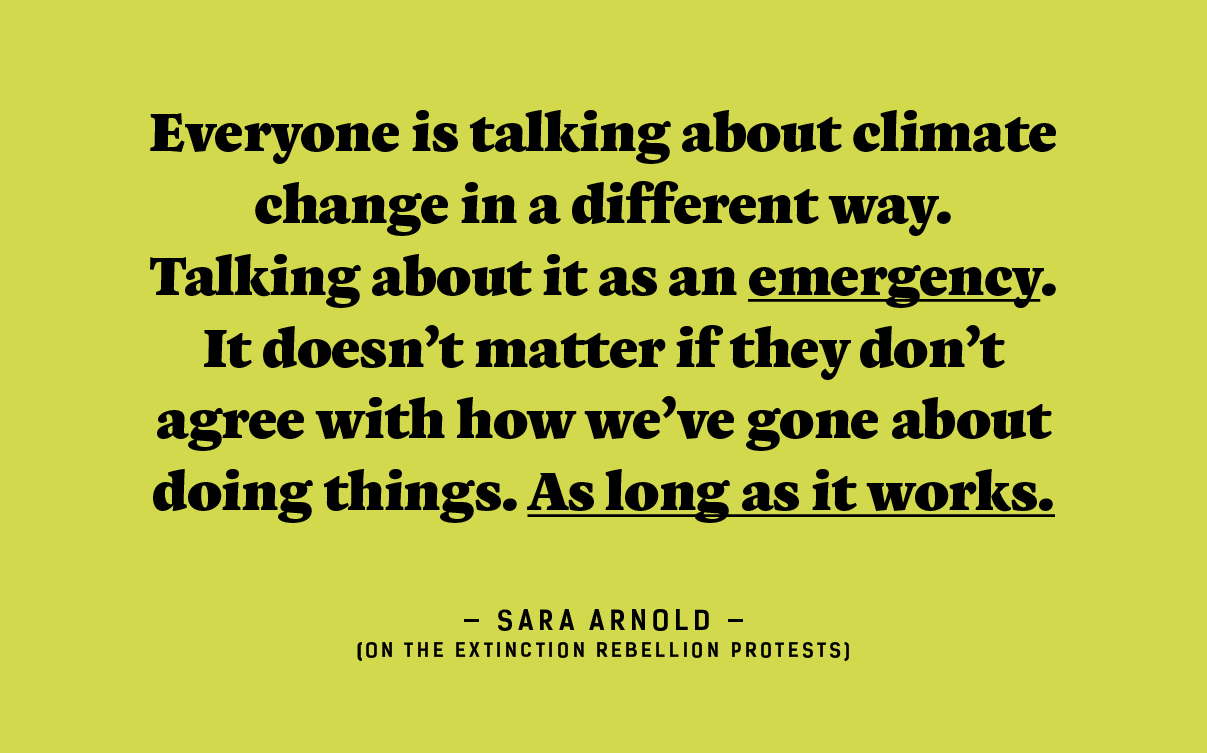
OdC: I’ve found that one of the reasons why we (Fashion Revolution) wanted to do this is the symbolism of joining hands. Even if everyone has a different way of doing things. The fact that the message is one of urgency is what we want to show. We need to all join together.
Could you tell me a little about how you guys started?
SA: Yes, so Extinction Rebellion were a group called Rising Up which started, in 2016, as a group of activists who wanted to theorise how they would go about creating this social change that we needed. They researched and put into practice different tactics. A member of Extinction Rebellion, Roger Hallam, who is currently doing his PhD at King’s College on these issues, one of the things he did was engage with an activist group at King’s that for years had been trying to get the University to disinvest from fossil fuel. They decided to stage a hunger strike. They were told that this process, even just the bureaucracy of disinvesting from fossil fuels would take a year to sort out. They said ‘okay, so let’s just try it’. So they went on hunger strike.
Sarah Mower: Because the university was investing in fossil fuels?
SA: Exactly. The whole process, from start to finish, from them going on hunger strike to all the investment coming out was 2 weeks. When they were told it would take years. So it just goes to show that direct action makes change. People do what they think is not possible when they are faced with disaster.
OdC: When I went to the first extinction rebellion meeting, you were talking about in war and in emergency, people make things happen. So the factories go from producing kitchenware to producing arms. When it is a state of emergency, historically, we’ve known citizens and organisations to take action pretty rapidly.
SA: Exactly. Now we have to get this declaration through to them so they can act.
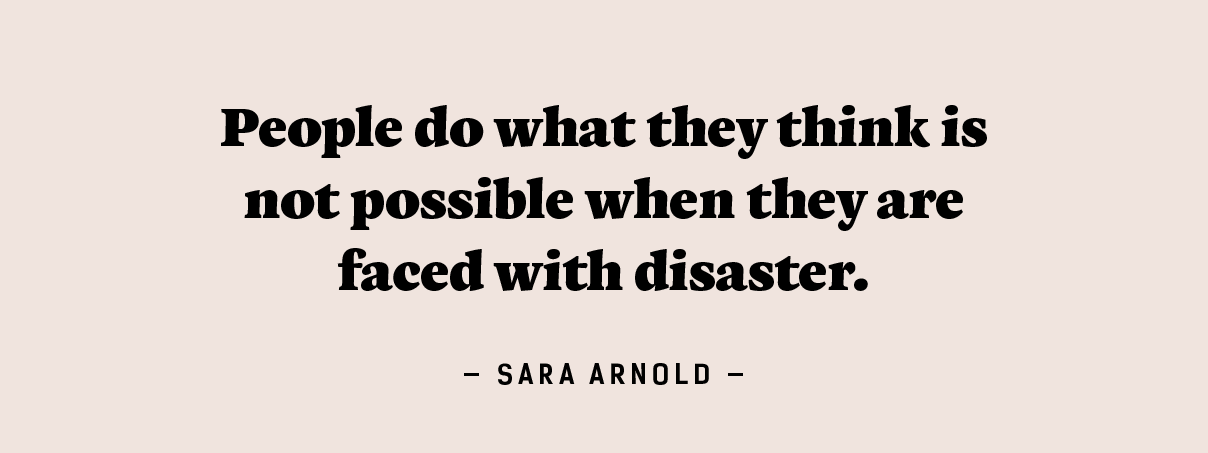
OdC: And so what about the involvement of Greta (Thunberg)?
SA: Greta was there when we held the Declaration of Rebellion on the 31st of October 2018. So we’ve had her support since the beginning. It’s really great that she came back at this time for the protests.
SM: She has changed everything.
OdC: She has changed everything.
OdC: You have other hubs in other countries, do you find there are other meaningful partnerships with local organisations in the rest of the world? Are you finding that people want to join you or do you find that they are hesitant to do so?
SA: The International Rebellion was in 33 countries. We have groups set up in 49 countries.
OdC: So like Fashion Revolution, you are de-centralised in the sense that it is volunteer run and people start their own groups.
SA: Yes. So we have 200 groups in the UK alone. The groups outside of the UK can have different demands to ours. They can adapt what we have done to respond to their own political situation. We’re so fortunate here to have police that are peaceful. And we have to use that privilege. We have a really engaged group in Ghana but if they did the same thing we are doing, they are looking at being arrested and then disappearing. It’s important for us to have solidarity with them. We keep a list of the names of those people so if anything does happen, we can protect them. It really interesting to get into that and see how we can help to take it further, internationally.
OdC: There are issues when you are a global group and you are dealing with law in different countries, even though the message is the same. Its important to recognise that.
OdC: How do you deal with citizens apathy out of fear? That people are so scared over what will happen, that they tend to go home and not know where to start.
SA: We need to really bring about this sense of urgency. That this is an absolute emergency. I feel its important to make people understand what the consequences are. We are talking about mass starvation, the death of billions of people if we reach a certain tipping point. Starvation is something we are really heading towards. We have 30 to 40 years left of fertile soil in this country, other countries are already hitting that. Let alone all the other problems. We are so dangerously close to hitting the tipping point.
Everyone is going to react to this differently. Everyone will go through a process of grief. And for a lot of people, grief will mean denial. That’s fine, you just have to feel compassion towards that. With extinction rebellion, what we are saying, is that when you give people the truth, a certain percent of the population, we think between 1 and 3% will rise up. And that is all we are aiming for. We need that 1 to 3% to rise up, to bring this to the governments and to take control.
OdC: And speak truth to power.
SA: Yes. We’ve been trying for the last 30 years to give people this positive message that we hope people will engage with and that great, but we don’t have time for that now.
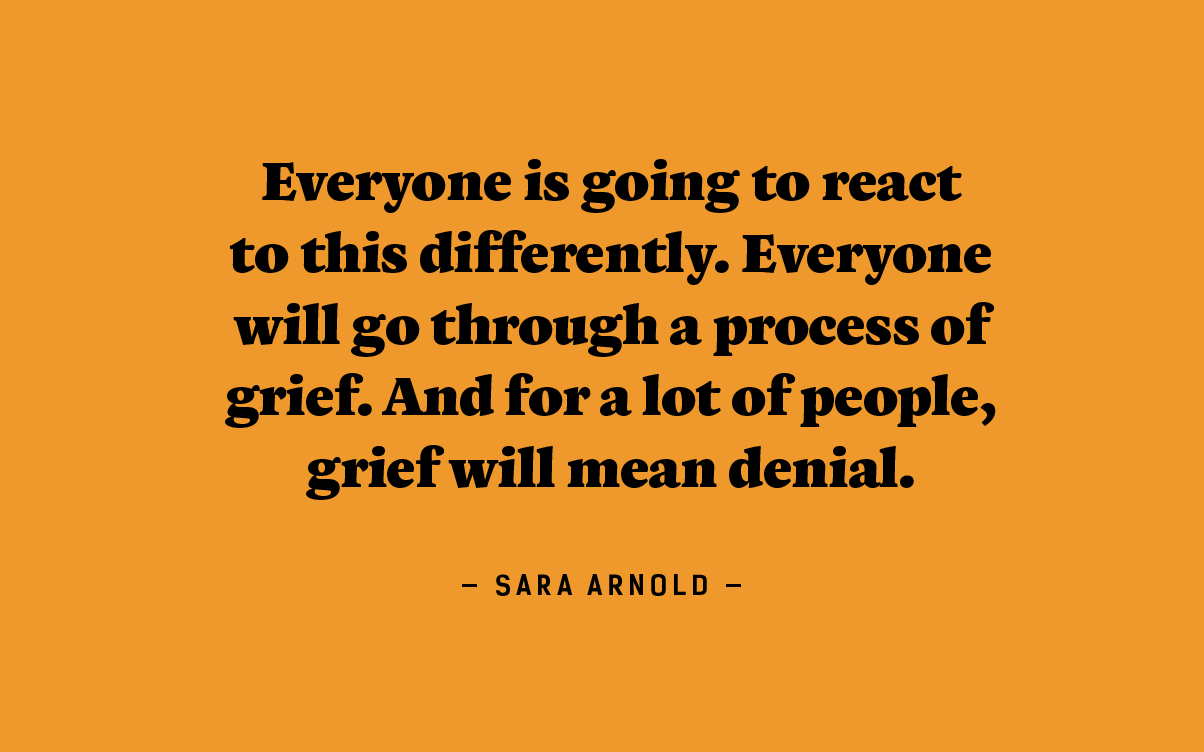
SM: So what do you think when Greta Thunberg stands in front of Michael Gove and he acts all Mea culpa. How do we hold him to account and get through real change?
SA: It’s a difficult question.
SM: If we’re talking about footfalls and governmental change.
SA: This is stage 1 of the rebellion. We can rise up and be bigger next time if we need to. I think. As we are doing that, we are waking people up to this emergency and its not something you can turn the clock back on. I think sooner or later the government will have to act.
OdC: I thought Mary Creagh was very honest at the recent Fashion Question Time when she was saying that we cannot do 2025 but working towards 2050, hoping it will gradually get faster and easier.
‘We aren’t going to get to net zero by 2025. The science will tell us what to do to get to net zero by 2050, and then in five years’ time to 2040 and then we’ll aim to get there for 2035. We have wasted the last 10 years, we’ve had no new policy in this country to change behaviour and we’ve done some policy mistakes along the way.’ Mary Creagh, Fashion Question Time at the V&A
SA: I think that we have to hit 2025. The Arctic is melting. We could lose it in a few years. That could be the tipping point that takes us into oblivion. We have to set our targets at something that seems impossible because then we are forced to look at system change. It is not about what we can do within the existing system, we have to look beyond that and listen to the science.
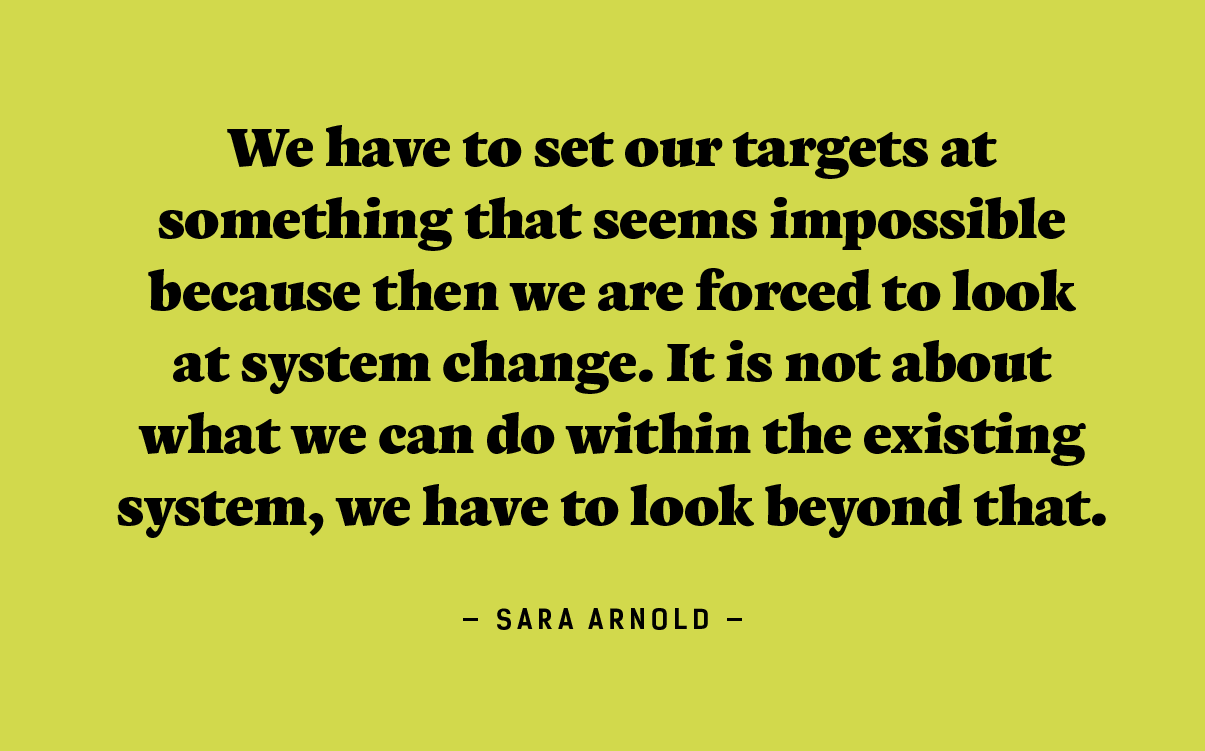
OdC: The science…the science corroborates that if we did stop now, it would get worse before it gets better.
SA: That’s the thing, pollution is currently cooling the earth. We are now 1.1 degrees warmer than we were during pre-industrial times. We need to keep ourselves below 1.5 if we are to avoid the most catastrophic consequences. BUT..If we slam on the brakes right now, the pollution will clear, causing an abrupt rise in temperature. This increase has been predicted to be between 0.5 and 1.1 degrees and so we may well have already used the carbon budget associated with 1.5 degrees of global heating. And that also puts us dangerously close to tipping points that will lead us into a so called ‘hot-house earth pathway’ of runaway climate breakdown. Its predicted that we reach this tipping point at around 2 degrees of global heating. Prof. Jem Bendell released a paper, ‘Deep Adaptation’, that puts together all the science to conclude where it is we are headed. His conclusion is that the collapse of civilisation is soon and inevitable. That immense catastrophe is likely and extinction possible.
‘I have chosen to interpret the information as indicating inevitable collapse, probable catastrophe and possible extinction.’ – Prof. Jem Bendell, Deep Adaptation: A Map for Navigating Climate Tragedy
So that is why we have to think about how we are going to adapt our culture, how we can reconnect with the thought of what it means to have a fulfilled life. What is important to us? This is why we say it’s not really about providing hope to people its saying we just need the courage to get through this and do what is necessary.
OdC: If we look at precedence, historically, the last time there was a massive mobilisation was in the 60’s. I often joke that the peace sign embroidered on jeans practically stopped the Vietnam war but it essentially sparked consumerism.
SM: Its true and now that generation, who are now grandparents, see their grandchildren protesting against it. It’s something I find very moving.
Further reading:
BBC: UK Parliament declares climate change emergency
Fashion Revolution Blog: Fashion Question Time at the V&A
The Guardian: Human society under urgent threat from loss of Earth’s natural life
Open Democracy: Britain just declared a climate emergency. What happens next?
IPCC: Special Report: Global Warming of 1.5 ºC
Life Worth: Deep Adaptation: A Map for Navigating Climate Tragedy
The Library: Study Hall: London Central Saint Martins
Check back every month for more in the Power of Influence series. We’ll post a new entry on the last day of each month throughout 2019. If you think there is someone we should be talking to, drop us a line on instagram.
We host Fashion Revolution Week in April of every year. This year kicked off on the 22nd of April. Throughout the week we encouraged people to ask brands ‘who made my clothes’ in hopes of shining a light on the unknowns of the fashion industry. By doing this, we hope to shift the focus from consumers to brands, and to all the hands involved, be it producers, workers, farmers or otherwise. We track the reach and impact of collaborators throughout Fashion Revolution Week and use the findings to fight for change worldwide, through government and policy. We are able to do this through the generous support of people like you. Please consider donating. Thank you.
Sparked by the buzz around HRH Meghan Markle choosing to shop amongst sustainable brands (yay), we found ourselves interested in learning more about the conscious and subconscious effect of social influencers and how that can shape our buying habits. Throughout 2019, we will be sharing our ‘Power of Influence’ series, talking to people within the fashion and social media realms about how they are using their platform for positive action. In this post, we celebrate Mutha.
Mutha are my favourite new source for all things sustainability. They not only have great fashion related content but they also delve in to other areas such as food, tech, sport and feminism. Their youtube channel is hosted by an insanely engaging team of presenters and their #relatable language and design aesthetic is something to be envious of. Current faves in their playlists include ‘Zero Waste Man‘ and ‘Black Friday Madness‘. To find out more about how it all happens, I chatted to Susan Adegboye, Mutha’s social media coordinator.
[youtube v=”6XqRPsULEnk”]
What is Mutha and how did it start?
So Mutha stemmed from wanting to celebrate the individuals and organisations operating in the world of food, fashion, travel and sport that are making a conscious effort to look after this planet of ours. We wanted to create a platform dedicated to the forward thinkers that were shifting the dial for a sustainable future, highlighting the importance of looking after the planet but without the scaremonger tactics.
Can you explain a little about the kind of content Mutha is creating to bridge that gap?
We tried to bridge that gap by including communities and groups that have previously never really been involved. A good example of this is SpAir Max Day, where we decided to tap into the sneaker community.
Coinciding with Nike Air Max Day on March 26th, we filmed a two-part series with renowned sneaker head Kish Kash, encouraging the sneaker community and a few household names such as Annie Mac, Clara Amfo and Leo Greenslade, to look into their vaults and donate some of their used, worn-in and probably landfill destined kicks to launch the first ever pop up sneaker shop where customers donate instead of buy. With the aim of collecting 1000 pairs of Air Max, cleaned by the team at Jason Markk and donated to the Brixton Soup Kitchen clothing and shoe bank.
We wanted to show the Mutha audience that upcycling and donating our used clothing and shoes not only has a positive impact on the environment, but that it can help people in our community in need. We wanted to work with the sneaker community to show how they can come together to do something good.
[youtube v=”ABaUzcJk33Q”]
I think thats a really interesting point – including communities that haven’t previously been part of the conversation. At this point, it feels like there is something everyone can do to play their part.
Exactly!
One of Muthas instagram post states ‘you don’t have to be perfect, just do your best’. Do you think there is a tendency to shame when it comes to issues of sustainability?
Nobody’s perfect and we all make mistakes, we’re human after all. It’s about what we do after the mistakes that really matters.
On that note, the team of presenters on Mutha feels very natural, honest, like they are part of the communities they interact with and they are experiencing the challenges and issues at the same time the audience are. Was it a conscious decision to work in this way?
Our presenters and the rest of the Mutha team, do not want to preach, but rather learn and share to inspire positive change. They represent the team behind the scenes who create the content and more importantly the audience who watch it. Our presenters come from varied backgrounds and have passions in totally different areas, but are all connected in the quest to learn and to live in a more sustainable way.
Thats definitely something that personally resonated with me when I first came across Mutha. It’s an inviting atmosphere. You sympathise and relate to the faces and voices you see and hear. Have you seen a positive reaction to this approach? Do your audience get it? Are they realising what they can do?
Ah we’re happy to hear that! At Mutha we believe that change has to start from within, we’re all on a journey here and in the 9 months since we started it we’ve all seen changes in ourselves and in our habits. The world of sustainability is often filled with doom and gloom, but a lot of us feel more optimistic now than we did before we started this journey. All the people that we’ve featured on our channel (and most of the feedback that we’ve received from our audience) is that Mutha feels like a celebration and inspires us to take the small actions that lead to big change.
So what does the future of Mutha look like?
The future of Mutha looks bigger and better, creating a lasting impact on an even wider scale. We hope that we can continue to provide a place where people can learn about sustainability and appreciating the world that we live in.
Thanks, Susan!
To keep up to date with all things Mutha, you can follow them on instagram and subscribe to their youtube channel. The second part of their two part SpAir Max Day initiative launched April 4th – see the video here.
Check back every month for more in the Power of Influence series. We’ll post a new entry on the last day of each month throughout 2019. If you think there is someone we should be talking to, drop us a line on instagram.
We host Fashion Revolution Week in April of every year. This year kicks off on the 22nd of April. Throughout the week we encourage people to ask brands ‘who made my clothes’ in hopes of shining a light on the unknowns of the fashion industry. By doing this, we hope to shift the focus from consumers to brands, and to all the hands involved, be it producers, workers, farmers or otherwise. We track the reach and impact of collaborators throughout Fashion Revolution Week and use the findings to fight for change worldwide, through government and policy. We would hugely appreciate it if you would be willing to share a story or celebrate a brand you love or simply ask #whomademyclothes during Fashion Revolution Week in 2019.
Sparked by the buzz around HRH Megan Markle choosing to shop amongst sustainable brands (yay), we found ourselves interested in learning more about the conscious and subconscious effect of social influencers and how that can shape our buying habits. Throughout 2019, we will be sharing our ‘Power of Influence’ series, talking to people within the fashion and social media realms about how they are using their platform for positive action. In this post, we talk to Ashley AKA bestdressed.
There is something different about Ashley’s videos. There is no big agenda, no preaching or bragging, no shaming when she talks about clothes. There is just this subtle little undercurrent of care and attention in the way she approaches her wardrobe. Thrifting, flipping (making new things out of old things) and the occasional scattering of self-deprecating humour makes for some exceedingly entertaining videos. Being an avid fixer and flipper myself, I wondered what made Ashley start working in this way and what effect, if any, she thinks it has on her audience.
Could you share your name and various media handles:
Ashley (aka bestdressed)
Youtube: bestdressed
Instagram: @best.dressed
Upon first glance, your youtube channel might seem like many others – OOTDs, clothing hauls and ‘day in the life of’s. When digging in though, your approach to sustainability through thrifting, upcycling and flipping your finds is totally ingrained into everything you do and say. For us, this is such an important and positive message to be spreading, something that others on the platform can seem to ignore. What made you start working in this way? Was sustainable fashion something you’ve always been conscious of?
I’m flattered, but honestly I never made a conscious choice to be a ~hero~ of sustainability! My love of thrifting and tendency to rewear clothes really comes from a financial perspective. When I was a younger, I never liked thrifting, My sister would always find gems, but I’d get bored and frustrated 15 ugly sweaters in and go play Doodle Jump in a corner. But two summers ago, when was in full on chipmunk mode post-wisdom teeth removal, I needed something to pass the time before my cheeks deflated. Lo and behold, I decided to go thrifting, and finally found some cool stuff. From that point on, I was obsessed – mostly because at that point I was still working for $8 an hour at an ice cream shop and could use the cheapest clothes I could get. Plus, I was about a year into my (vastly unsuccessful at that point) YouTube career. I would post a haul or OOTW here and there, but I could never seem to keep up with other girls who would have five completely new outfits each week. Thrifting, for me, was a way to experiment with my style and make interesting content, and rewearing clothes for years (even “fast fashion” clothes from Forever21) was just a product of not having that much money.
In a lot of your videos you alter, adjust, flip your existing clothes (or second hand clothes) into something totally new. Do you think it’s something everyone could and should be doing? Does this satisfy the itch to own something new, without playing into the fast-fashion world?
For me, it’s even better! It’s like Marx’s theory of alienation from the work product, right? There’s something so satisfying about making or altering something yourself. Every time you look at it or wear it you get to be like “Damn! I did that! And nobody else has anything like it!” I know everyone’s not the craftiest or has time to alter their clothes, but I hope I can encourage people to at least give it a try! Something as simple as patching up a hole instead of throwing a shirt out, or cropping an old t-shirt are a great place to start!
Do you feel the pressure from brands to buy? Do you think it’s possible to stay fashionable without buying in excess?
Absolutely. That’s the whole job of the marketing industry. And now social media is overtaken by the marketing industry. So every day, tons of images and videos are telling you that you want new things. Honestly I fall victim to this too. It’s usually only when I’m bored or procrastinating or feeling shitty, but I’ll go into this fervor of opening tabs and adding items to my cart. Normally the total price at checkout stops me though, haha. I don’t go to malls anymore because they make me crazy. Literally my brain just goes: clothes! clothes! more clothes! I sound insane but I swear this probably happens to a lot of us. Luckily, a lot of what’s “fashionable,” at least for a certain segment of internet hipsters, is shifting towards thrifted and vintage clothes. I love that it’s cool now to wear an old oversize t-shirt or a vintage linen dress. Since my entire job revolves around fashion, I do still buy new clothes, but I always think about my purchases thoughtfully and try to mix in thrifted, vintage, sustainable, and altered clothes.
Do you see an uptake in responsibility from your followers when you share content that focuses on sustainable issues? Do their responses show that they’re thinking differently about what they buy and how they buy?
Honestly unfortunately I think it’s a bit of singing to the choir when it comes to sustainable vs. fast fashion. There are still crazy amounts of $300, $500, $5000 Wish/Zaful/Shein hauls online, with audiences willing to watch. I’m chillin over here in my corner of the internet with gals who already love thrifting. And who’s reading this article? Surely people who already care about sustainable fashion. Perhaps that’s just me being a bit of a pessimist. In the long run, I think sustainable content can change how people think, but it takes time. I hope that at least some people who have subscribed to my channel from a fashion video have found their way to a thrift haul, and after watching a couple, have tried thrifting on their own! And maybe my thrift flips makes fellow sewing nerds like me feel a little cooler lol.
Okay now for some quick ones…
- Current favourite piece in your closet?
A sherpa jacket I thrifted from the men’s section! So cozy and looks like it cost a fortune - Do you remember the first piece of clothing that you ever bought for yourself?
A gray American Eagle hoodie in 6th grade - Do you still have it?
I wore it nearly every day to school for 3 years (I was one of those kids) but we had to part ways after it was pretty much falling apart. - Do you know who made the clothes you are currently wearing?
My top is thrifted (so not sure who made it originally) and my jeans are Redone vintage Levi’s made in the US. - Top tip for others wishing to shop more responsibly?
Start with browsing a vintage or thrift store, finding a few quality sustainable pieces to invest in, looking through your own closet to find old gems you forgot you loved… or even remembering to return items you don’t end up loving – that’s a huge one! It’s so easy, you get your money back, and you don’t end up with clothing sitting in the back of your closet. You’d be amazed by how many people buy stuff and can’t be bothered to return it. I think sustainable culture can be a bit intimidating and make you feel guilty for your past purchases or if you aren’t perfectly sustainable at the start. It’s all about starting small – even if you just stop and think about one fast fashion purchase per month, that’s still awesome!
Thanks, Ashley 🙂
Check back every month for more in the Power of Influence series. We’ll post a new entry on the last day of each month throughout 2019. If you think there is someone we should be talking to, drop us a line on instagram.
We host Fashion Revolution Week in April of every year. This year kicks off on the 22nd of April. Throughout the week we encourage people to ask brands ‘who made my clothes’ in hopes of shining a light on the unknowns of the fashion industry. By doing this, we hope to shift the focus from consumers to brands, and to all the hands involved, be it producers, workers, farmers or otherwise. We track the reach and impact of collaborators throughout Fashion Revolution Week and use the findings to fight for change worldwide, through government and policy. We would hugely appreciate it if you would be willing to share a story or celebrate a brand you love or simply ask #whomademyclothes during Fashion Revolution Week in 2019.
Sparked by the buzz around HRH Megan Markle choosing to shop amongst sustainable brands (yay), we found ourselves interested in learning more about the conscious and subconscious effect of social influencers and how that can shape our buying habits. Throughout 2019, we will be sharing our ‘Power of Influence’ series, talking to people within the fashion and social media realms about how they are using their platform for positive action. First up is Arden Rose.

I was recommended Arden’s youtube channel by Youtube itself (thanks algorithms). Finding a funny, interesting AND socially, environmentally conscious human who also creates entertaining content is pretty rare, right? Exactly. I was hooked right away, and with 1.4 million youtube subscribers and coming up to 900k followers on instagram, I wasn’t the only one. My first point of call was watching the fantastically titled ”how to NOT destroy the planet while shopping“. There were many questions I wanted to ask, much admiration I wanted to share. So…after a quick binge of other videos, and a swift click of the subscribe button, Arden became the first in this series of interviews. Her answers didn’t disappoint. Read on, read on…
To start, could you share your name and various media handles:
@ardenrose on everything!!
In a community of hauls, where buying in excess and presenting that image to the world is commonplace, you choose to do differently. We think that’s totally awesome and also pretty brave. Was it hard for you to step away from the established way of working and suggest a different way of doing things?
It was hard in the sense that hauls tend to do well on YouTube and they’re easy (i.e. unoriginal) content to make. Honestly, buying that much junk was tiring, it filled up my closet with trendy pieces I don’t want in a month, and it was boring to make. I’m so much happier to share clothing that I had to hunt or search for to make it sustainable and worth showing on my channel! Honestly, everyone should give themselves the challenge of not relying on constantly selling their audience on cheap slave labor. Definitely helps me sleep (slightly) better at night.
Your video ‘how to NOT destroy the planet while shopping’ is SO well informed and honest and great. You mention other youtubers who inspired your choices. Do you think more people on the platform need to be addressing these issues?
ABSOLUTELY. It shocks me that people can just turn a blind eye to the obvious pain they allow corporations to get away with or ignorantly support. Everyone should be promoting sustainable business practices, especially the women on the internet that tend to to push fast fashion as a “cheap” and “easy” alternative to a constantly refreshing industry like the fashion industry. Viewers should be educated, but at the very least the entertainers who are preaching to them should be educated.
Have you always been a conscious consumer or was there a moment when the switch flipped and you started to think more about the way you buy?
I touch on this briefly in my “how to NOT destroy the planet while shopping” video, but I used to make H&M and Forever21 hauls allllll the time. Constantly. My channel was filled with that shit. Fortunately I sat down and watched all the necessary documentaries and read all of the articles late last year and completely got my stupid self educated on the issue. Honestly, I always KNEW that fast fashion was bad business, but I was wilfully ignorant so that I didn’t have to give up my shopping addiction that felt baked into my personality.
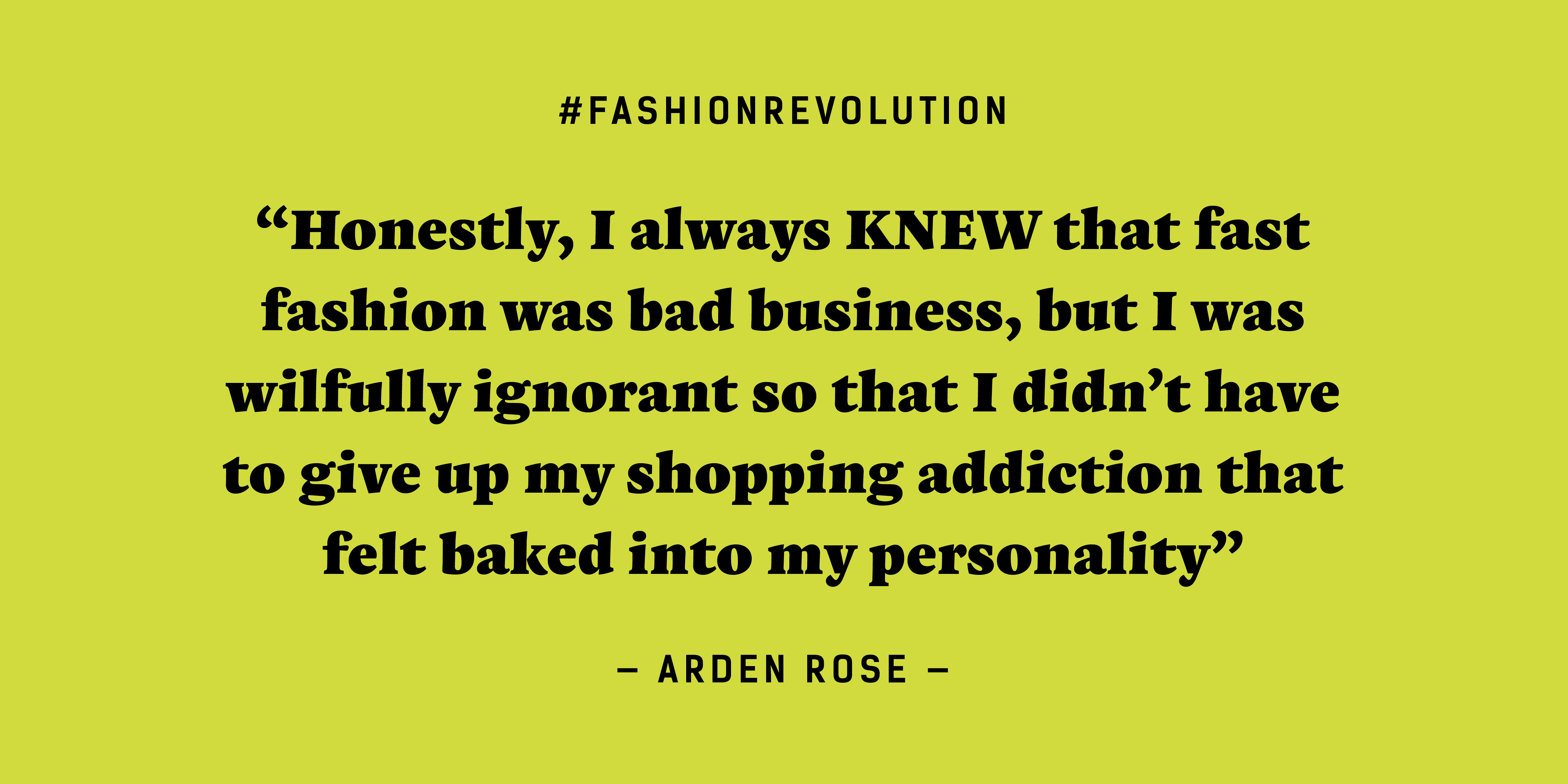
Do you see an uptake in responsibility from your followers when you share content that focuses on sustainable issues? Do their responses show that they’re thinking differently about what they buy and how they buy?
Yes!! And that’s what’s so amazing to me! I don’t even have the largest audience but I get hundreds of comments about my sustainability video a week. I didn’t even think that many people saw it! Nowadays, consumers want to be in the know, and they want clear consciences. Having a friend on the internet (me!) sitting you down and calling you out on the way you’ve been spending your money is helpful and doesn’t feel accusatory! It feels like friendly advice which is important. A lot of people get turned off of the sustainability conversation because it sounds preachy. You need to be a friend to these people, not a holier than thou asshole. I like to think I’ve helped a lot of young women and men rethink their spending habits when it comes to fashion, but I also think it’s just the power of a younger generation that actually cares about others and the planet! They’re awesome and so fired up for change!
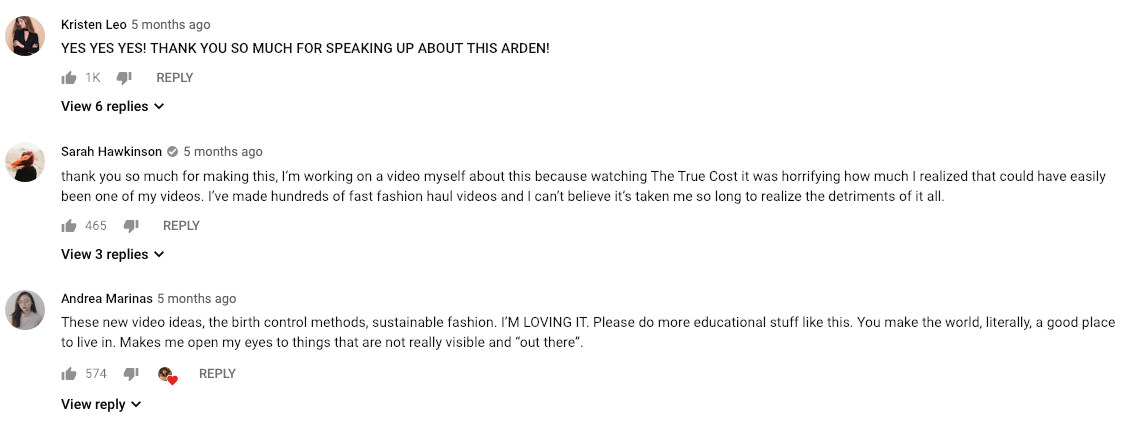
Do you think it is easy to find and share information about the sustainability of fashion brands and the effects of fast fashion on people and planet? Is there anything you can think of that would help make it easier to do so?
It is easy if you want to find it. It would be easier if large publications and fashion houses made it a priority to promote the message. It doesn’t benefit the industry to reveal its ugly underbelly, so they try to hide it, or dangle a carrot in your face via a “sustainable line” that only happens once in a blue moon. If there was a grassroots coalition of the top fashion bloggers and instagram baddies calling these companies out and only promoting sustainable brands, I can bet you big money things would shift in a major way.
Okay now for some quick ones…
- Current favourite piece in your closet?
A brown corduroy button down dress from Paloma Wool that I bought recently. - Do you remember the first piece of clothing that you ever bought for yourself?
I would have NO idea and I find that sad. It was probably a tee-shirt from Target if I’m being honest. - Do you still have it?
Definitely not. - Do you know who made the clothes you are currently wearing?
Yes! A small company in Denmark knitted my sweater, my tee shirt is of my own design and is produced sustainably in Canada, and my leggings are from an activewear company that produces everything in a mom and pop shop out of Italy. Wearing a very well traveled outfit right now hahaha. - Top tip for others wishing to shop more responsibly?
Unless a brand *explicitly* advertises that it’s sustainable, be skeptical, and even if they do, remain skeptical. Educate yourself. We have the internet now and have 0 excuses to be ignorant! If you question the sustainability of a brand, do a quick google search before committing to the purchase. It’s true that sustainable fashion tends to be a bit pricier but just think about all the hands that it took to create the piece you’re holding and the people they belong to that are being paid well and treated with respect because you’re willing to treat your closet with respect. We don’t NEED an abundance of new clothes every season, we’ve been duped by an industry that only has money in mind. You don’t have to have the latest trend in your closet, you can re-wear clothes until they fall off your body, and anyone who judges you for your lifestyle is slow on the uptake.
Thanks, Arden 🙂
Check back every month for more in the Power of Influence series. We’ll post a new entry on the last day of each month throughout 2019. If you think there is someone we should be talking to, drop us a line on instagram.
We host Fashion Revolution Week in April of every year. This year kicks off on the 22nd of April. Throughout the week we encourage people to ask brands ‘who made my clothes’ in hopes of shining a light on the unknowns of the fashion industry. By doing this, we hope to shift the focus from consumers to brands, and to all the hands involved, be it producers, workers, farmers or otherwise. We track the reach and impact of collaborators throughout Fashion Revolution Week and use the findings to fight for change worldwide, through government and policy. We would hugely appreciate it if you would be willing to share a story or celebrate a brand you love or simply ask #whomademyclothes during Fashion Revolution Week in 2019.
Hola Gema, antes de nada me gustaría que nos presentaras a Gema Gómez y a que se dedica profesionalmente:
Hola. Contaros que soy diseñadora de carrera y que he trabajado en varios institutos de tendencias en París y en dos grandes cadenas aquí en España.
En estas dos grandes cadenas me di cuenta del impacto que tenía esta industria en lo que nos sostiene, que es la naturaleza y decidí que “o era parte del problema o era parte de la solución”. Gracias a esta decisión me lancé a crear un proyecto , este proyecto llamado Slow Fashion Next, con tres ejes fundamentales:
Por un lado la formación, porque antes de todo esto quise lanzar una marca de moda sostenible, y fui consciente de lo difícil que era llegar a entender un concepto de una manera clara; me dije “si esto me está pasando a mi, le está pasando a mucha gente”. Y empecé con este tema de la formación con la intención de acortar ese tiempo de búsqueda y de investigación. Esta parte la realizamos a través de los cursos online .
El siguiente eje fundamental es la divulgación de iniciativas que ya tuvieran que ver con esta tendencia y que realizamos a través de las redes sociales. La verdad es que tenemos mucho impacto y muchos seguidores en todas ellas.
Y el tercer eje es generar comunidad alrededor del concepto. Esta es la parte de networking que desarrollamos con la jornada de moda sostenible en el Museo del Traje de Madrid. Una vez al año reune a profesionales que se dedican o que quieren estar vinculados con este sector.
¿Puedes contarnos un poco sobre el concepto de Slow Fashion?
Para mi Slow Fashion es un concepto de moda que ha surgido como contrapartida al Fast Fashion: Al igual que el Slow food que surgió a partir del Fast Food, para dar respuesta a la problemática de comer mal, produciendo alimentos nocivos para el cuerpo y sin respetar el ritmo de la naturaleza. Es decir, el Slow Fashion surge como la alternativa para producir de una manera que se respete al medio ambiente, a las personas y a los seres vivos.
¿Cuales son, a tu parecer, los problemas más graves del consumo de Fast Fashion?
Sobre todo, el problema es el que mencionas en la propia pregunta: El consumo e hiperconsumo.
El Fast Fashion no deja de ser un modelo de negocio basado en la venta masiva; para ganar se tiene que vender mucho, y para sostener ese modelo de negocio, se tienen que vender muchísimos millones de unidades. Esto a nivel planetario es imposible. Según el’Informe Planeta Vivo 2014′ de la ONG WWF., afirman que si seguimos consumiendo al ritmo que lo estamos haciendo, necesitaríamos de dos a cinco planetas.
Este hiperconsumo lleva consigo la explotación de recursos naturales que necesitamos para nuestra supervivencia y la de nuestros hijos y nietos, así como la contaminación medio ambiental, que también repercute en la salud de las personas, el hecho de que no se pagan salarios justos a todos los trabajadores de la cadena, etc.
¿Y cuál sería la solución más cercana, fácil y realista para ese cambio?
Desde mi punto de vista, no hay una única solución.
Primeramente deberíamos dejar de comprar tanto y comprar con mucha más consciencia. Saber lo que tenemos en el armario, pues las estadísticas dicen que el 80% de lo que tenemos en nuestro armario apenas lo usamos. Lo cierto es que llevo muchos años dando charlas sobre este tema y todo el mundo está de acuerdo con esta afirmación; por lo tanto, lo primero creo que sería empezar a mirar y a usar lo que ya tenemos, siendo esta la solución más cercana, fácil y realista cómo bien me preguntas.
Ya a partir de ahí, quedándonos únicamente con lo que realmente usamos, dinamizar el resto de prendas que no nos gustan o no nos quedan bien, para que sean usadas por otras personas u otros diseñadores. Así se les dota de una nueva vida, para que toda esa materia y energía que se ha utilizado al fabricarlas, no caiga en vano.
Lo segundo realmente, son muchas soluciones alternativas. Por ejemplo, completar ese armario con iniciativas diferentes, segunda mano, de trueque, DIY y, por supuesto, empezar a apoyar a esos nuevos emprendedores que están surgiendo que producen con criterios de sostenibilidad.
¿Podrías resumirnos brevemente que es para ti “Fashion Revolution”?
Para mi Fashion Revolution es antes que nada un homenaje. Un homenaje para que no caiga en el olvido la muerte de las 1133 personas que murieron en el y todas las víctimas afectadas de por vida. Para que lo que ocurrió, no vuelva a ocurrir.
Es una campaña de denuncia y también es una campaña pedagógica y de acciones positivas. Porque considero que esta información debe llegar a los ciudadanos y a los consumidores, para que seamos mucho más conscientes a la hora de seguir apoyando según qué prácticas. Que reflexionemos sobre que tipo de modelo de negocio queremos apoyar, puesto que lo que compramos, es lo que votamos. Es por este motivo que que creo tan importante la función pedagógica de la campaña, para que consigamos impulsar otros modelos de negocio a partir de esa información.
¿Cuál que es tu aportación en “Fashion Revolution Spain”?
Nosotros desde Slow Fashion Next tenemos mucha difusión en redes sociales y nos resulta fácil generar movimiento alrededor de estos conceptos. Hemos creado un grupo de voluntarios, en redes sociales, para el blog, las redes sociales, y la web específicas de Fashion Revolution Spain. También hemos formado un grupo de educación que va a distribuir todo el material en colegios e institutos. El siguiente paso ahora es el animar a todas las marcas y diseñadores a que hagan eventos. En un nivel más general, conseguir a través de las redes sociales que todos los consumidores compartan fotos con sus prendas dadas la vuelta y con los hashtags de la campaña: #WhoMadeYourClothes y #QuienHizoTuRopa.
¿Cómo te gustaría que impactara este movimiento?
Como lo está haciendo. El primer año que fui coordinadora fue brutal comprobar que con una misma bandera, centenas de iniciativas a nivel global nos alzábamos bajo un paraguas común. La verdad es que eso fue muy potente. Hay que seguir creciendo. Buscar la manera de cada vez coordinarnos mejor. Y ser muy conscientes de que esto está tomando forma con el voluntariado de centenas, de miles de personas en todo el mundo, que además la mayoría somos emprendedores con nuestras propias iniciativas y que las horas las sacamos del sueño principalmente.
De lo que nos estamos impregnando todos, es lo que va a contaminar al mundo. Esa nueva filosofía de que queremos que las cosas se hagan bien y que queremos una industria limpia en este sector textil.
¿Cómo ves el futuro de la moda sostenible? ¿y más concretamente en España?
El futuro lo veo sostenible, sino, no lo veo porque no hay un “plan B “. El que no lo está haciendo, sabe que en algún momento lo tendrá que hacer, pues la sostenibilidad al final, es sensatez: cómo es tu cadena de suministro, cómo la controlas, si vas a tener materia o no las vas a tener…Por lo tanto, para mi el futuro de la moda es sostenible.
Ese es el punto principal y, más concretamente, en España, veo que es un futuro de emprendedores; un futuro de gente que ha empezado su negocio en medio de la crisis y con criterios de sostenibilidad. Somos muchos “locos” los que estamos haciendo esto y lo que siento es que es un movimiento fascinante que está dando lugar a miles de propuestas innovadoras. Esta red es increíble por todo el talento que existe en ella. Papeles como el mío desde la formación, son el conseguir precisamente dar impulso a todas estas nuevas empresas, para que puedan crecer y que esto se convierta en una realidad empresarial.
Volviendo a Fashion Revolution, puedes adelantarnos que acciones tenéis planeadas para este año?
Nosotros desde Madrid lo que hemos hecho, es hacer coincidir en fechas la V Jornada de Moda Sostenible del Museo del Traje en Madrid, que es del 22 al 24 de abril, con el Fashion Revolution Day. Además el día 22 es el día de la Tierra, con lo que será como celebrar una gran fiesta de tres días de moda sostenible.
Dentro del Fashion Revolution Day, tenemos ya preparadas algunas sorpresas que tendrán lugar durante ese día, pero que no queremos desvelar todavía. Sí decir que queremos que el domingo 24 sea un día de puertas abiertas, para todo el mundo que se quiera acercar al museo del traje en Madrid a vivirlo con nosotros.
Cómo comento, varias cosas ya en marcha. Yo invito a la gente a que se unan, a que nos sigan en redes para que formen parte de esa gran fiesta que va a ser el Fashion Revolution Day en el museo del traje de Madrid. Estamos animando también a que se realicen eventos durante toda la semana; puesto que este año cae en domingo y será más complicado para las tiendas hacer eventos ese día.
Por último, si alguien quiere colaborar o sumarse a esta iniciativa ¿qué puede hacer o con quién debe ponerse en contacto?
Si alguien quiere colaborar, tienen que escribir a spainfashionrevolution.org y nosotros desde ahí le derivaremos según si es una marca o un profesor por ejemplo, al grupo que corresponda. Pueden contactarnos también a través de las redes sociales y hemos creado un grupo para voluntarios como ya he comentado anteriormente. También vamos a contactar con todos los colectivos que estén sensibilizados medioambiental y socialmente para que difundan igualmente todos los eventos que hagamos, además de la comunicación a nivel del prensa nacional. Lo más fácil para cualquier persona que quiera colaborar, es subir una foto suya con la prenda dada la vuelta y con el hashtag de la campaña: #HowMadeYourClothes y #QuienHizoTuRopa, y si nos etiquetan, nosotros la difundiremos en nuestras redes.
¡Muchas Gracias Gema!
¡Muchas gracias a ti Nereida*!
* Nereida Jiménez es una de las voluntarias de Fashion Revolution Spain 2016
22-year-old Huang has been working in garment factories for about five years. Photo by Daniel Huang
I have been working in garment factories for four or five years. I am 22 years old now. When I graduated from junior high school I had nothing to do. Someone told me how good making clothes was and they introduced me to the industry. At that time I thought I was young so it would be good to learn something new. I started to make clothes then and I still do now.
I had many dreams when I was little, such as being a doctor or a policewoman or even being rich. I was so naïve then. Take the doctor dream for example. I am so scared of seeing blood. I once saw someone’s injury from a car accident. OMG, it was terrible. I couldn’t even look at the wound, let alone touch it. I even saw a dead body once. How can I be a doctor if I am so afraid of blood, injuries and death?
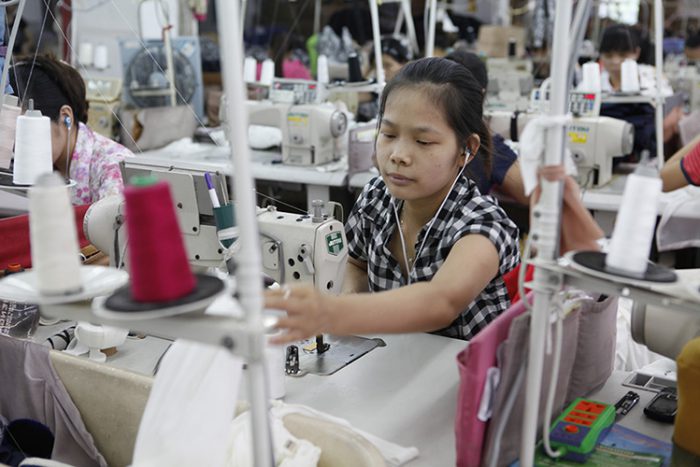
My plan is to work at the garment factory for a few more years but I won’t do it for the rest of my life. I will go back to my hometown to open a store in a few years. I just want to open a store, but I don’t know what kind yet.
When I graduated from junior high school, my mom asked me to keep studying but I didn’t. I was in a dilemma. My mom didn’t want me to work in the city at such a young age. She wanted me to stay in school but I was rebellious. I didn’t do well in school so I thought, “Why bother studying and spending money on my education?” I just came to the city to work so I could support myself. It was a very difficult decision for me. My mom tried to force me to study but I wouldn’t go. Honestly, I regret the decision a bit. I should have gone back to school.
For girls, it is better to learn something not so tough. I think I would learn to make patterns for clothes or something using electronic devices if I could go back to school. I want to learn something easy because I am a lazy person. I like doing finishing work for others so I don’t have to make everything from the beginning.
In terms of social life, garment factory workers like us don’t have time to take a break because we need to do overtime to keep up with production. I go out on public holidays, but there are so many people and cars during that time. I remember I went to a museum park once and I waited in line to get in from 7am to 10 am at the entrance. There were so many people there. For me, having a social life means going out shopping. Girls like shopping and buying cosmetic products. We should spoil ourselves from time to time.
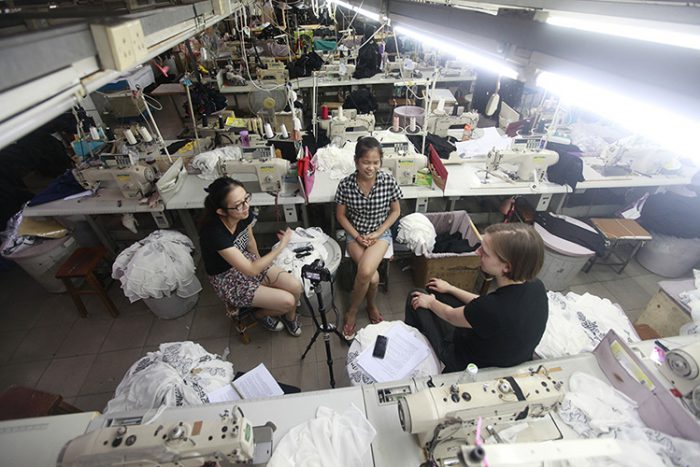
For example, I once spent 2000 RMB (330 USD) to buy a set of Mary Kay products. It is a big brand that I can trust. I buy skin care products instead of make-up. It is important for me to take good care of my skin to look young and pretty because there is dirt and dust around the factory. When I first came to the city, my skin was dark but my skin is getting better with good care. I think it is better to take care of my skin as I grow older. Dirt around the factory may clog the pores in my skin and cause various skin problems. To help, I give myself facials.
Concerning other self-care, I rarely exercise. Firstly, I don’t have much time and secondly, I am too lazy. I will sleep late whenever I have a day off. I am so lazy that I miss the time to exercise. I also hate to wash my clothes because I am lazy. I think it’s best if there is a washing machine but there is no machine so I just wash the clothes myself. When I finish my shower at night, how I wish someone would wash my clothes and I could just lie in bed and play with my phone. But no one is there to help me. Even if I forget about them for half a month, I still have to wash them myself.
This interview has been edited. It was conducted on July 13, 2014 at the factory where Huang works in the industrial area of Yantian east of Shenzhen, China. You can read the original interview here
Primary Voice is a collection of primary source interviews dedicated to documenting the living stories of garment factory workers worldwide. It was created by urbanist Mikaela Kvan. To read more interviews and to get in touch visit www.primaryvoice.org
